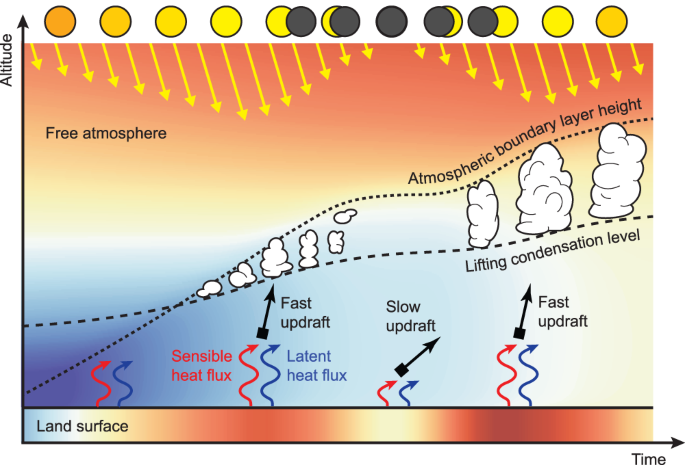Phys.org February 12, 2024
Clouds affected by solar eclipses could influence the reflection of sunlight back into space and might change local precipitation patterns. Satellite cloud retrievals have so far not taken into account the lunar shadow, hindering a reliable spaceborne assessment of the eclipse-induced cloud evolution. Researchers in the Netherlands used satellite cloud measurements during three solar eclipses between 2005 and 2016 that have been corrected for the partial lunar shadow together with large-eddy simulations to analyze the eclipse-induced cloud evolution. The corrected data revealed that, over cooling land surfaces, shallow cumulus clouds start to disappear at very small solar obscurations (~15%). Their simulations explained that the cloud response was delayed and was initiated at even smaller solar obscurations. They demonstrated that neglecting the disappearance of clouds during a solar eclipse could lead to a considerable overestimation of the eclipse-related reduction of net incoming solar radiation. According to the researchers their findings should be taken into account for cloud modelling simulations of the direct consequences of sunlight-intercepting geoengineering proposals, and their results serve as a unique benchmark… read more. Open Access TECHNICAL ARTICLE

Conceptual model of shallow cumulus cloud evolution during a solar eclipse. Credit: Communications Earth & Environment volume 5, Article number: 71 (2024)